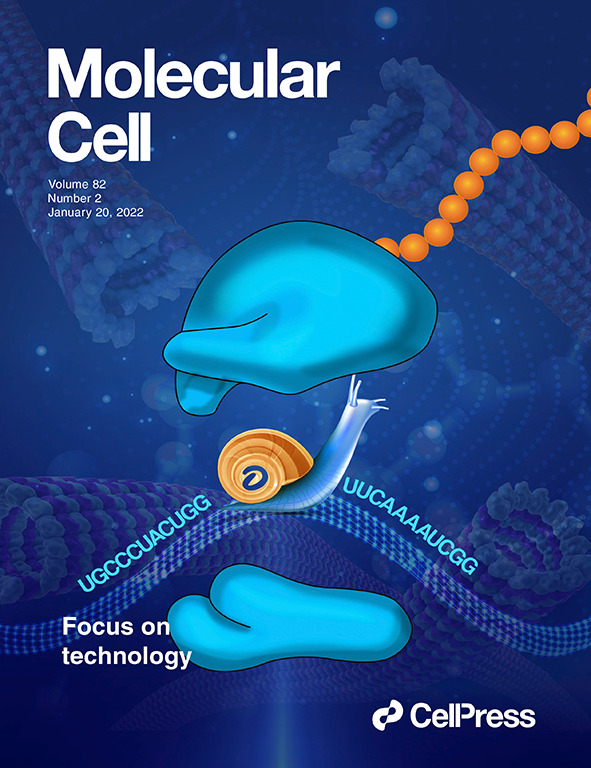p21 在细胞衰老和衰老相关疾病中的作用。
IF 3.7
3区 生物学
Q2 BIOCHEMISTRY & MOLECULAR BIOLOGY
引用次数: 0
摘要
在衰老过程或疾病进展过程中,人体内的正常细胞和组织会承受各种压力,导致细胞损伤,需要修复、适应、凋亡或防御反应。细胞衰老是这一过程中的关键因素,影响着衰老速度和疾病进展。衰老可由不同的应激因素触发,导致不可逆的细胞周期停滞和功能衰退。衰老细胞通常会高表达参与细胞周期停滞的细胞周期因子,如 p21 和 p16。最近的证据表明,p21 高表达细胞和 p16 高表达细胞在细胞类型、组织位置、积累动力学和生理功能方面代表着不同的细胞群。本文重点介绍在理解 p21 依赖性细胞衰老方面的最新进展。文章首先概述了 p21 在三种主要细胞衰老表型中的作用,p21 在这些表型中发挥着至关重要的作用。然后,文章深入探讨了与 p21 依赖性细胞衰老密切相关的疾病的发病机制,尤其是代谢紊乱和心血管疾病。文章还讨论了 p21 相关动物模型的研究进展,并概述了利用 p21 通过延缓衰老、消除衰老细胞和使衰老细胞恢复活力来干预细胞衰老的策略。这篇综述系统地探讨了 p21 依赖性细胞衰老的发病机制,强调了它在研究衰老异质性和开发新的衰老疗法方面的重要性。它旨在激励未来利用 p21 增强衰老细胞特性的研究,从而采用更精确的方法在适当的时间消除有害的衰老细胞,从而延缓衰老并有可能实现返老还童。本文章由计算机程序翻译,如有差异,请以英文原文为准。
The role of p21 in cellular senescence and aging-related diseases
During the aging process or disease progression, normal cells and tissues in the body undergo various stresses, leading to cell damage and the need for repair, adaptation, apoptosis, or defense responses. Cellular senescence is a key player in this process, influencing the rate of aging and disease progression. It can be triggered by different stress factors, resulting in irreversible cell cycle arrest and functional decline. Senescent cells often show high expression of cell cycle factors such as p21 and p16, which are involved in cell cycle arrest. p16 has long been recognized as a significant marker of aging. Recent evidence suggests that p21high cells and p16high cells represent distinct cell populations in terms of cell type, tissue location, accumulation kinetics, and physiological functions. This article focuses on recent advancements in understanding p21-dependent cellular senescence. It starts by providing an overview of the role of p21 in 3 primary cellular senescence phenotypes where it plays a crucial role. It then delves into the pathogenesis of diseases closely linked to p21-dependent cellular senescence, particularly metabolic disorders and cardiovascular diseases. The article also discusses progress in p21-related animal models and outlines strategies for utilizing p21 to intervene in cellular senescence by delaying aging, eliminating senescent cells, and rejuvenating senescent cells. This review systematically examines the pathogenesis of p21-dependent cellular senescence, emphasizing its importance in studying aging heterogeneity and developing new senolytic therapies. It aims to stimulate future research on leveraging p21 to enhance the characteristics of senescent cells, allowing more precise methods for eliminating harmful senescent cells at the right time, thereby delaying aging and potentially achieving rejuvenation.
求助全文
通过发布文献求助,成功后即可免费获取论文全文。
去求助
来源期刊

Molecules and Cells
生物-生化与分子生物学
CiteScore
6.60
自引率
10.50%
发文量
83
审稿时长
2.3 months
期刊介绍:
Molecules and Cells is an international on-line open-access journal devoted to the advancement and dissemination of fundamental knowledge in molecular and cellular biology. It was launched in 1990 and ISO abbreviation is "Mol. Cells". Reports on a broad range of topics of general interest to molecular and cell biologists are published. It is published on the last day of each month by the Korean Society for Molecular and Cellular Biology.
 求助内容:
求助内容: 应助结果提醒方式:
应助结果提醒方式:


